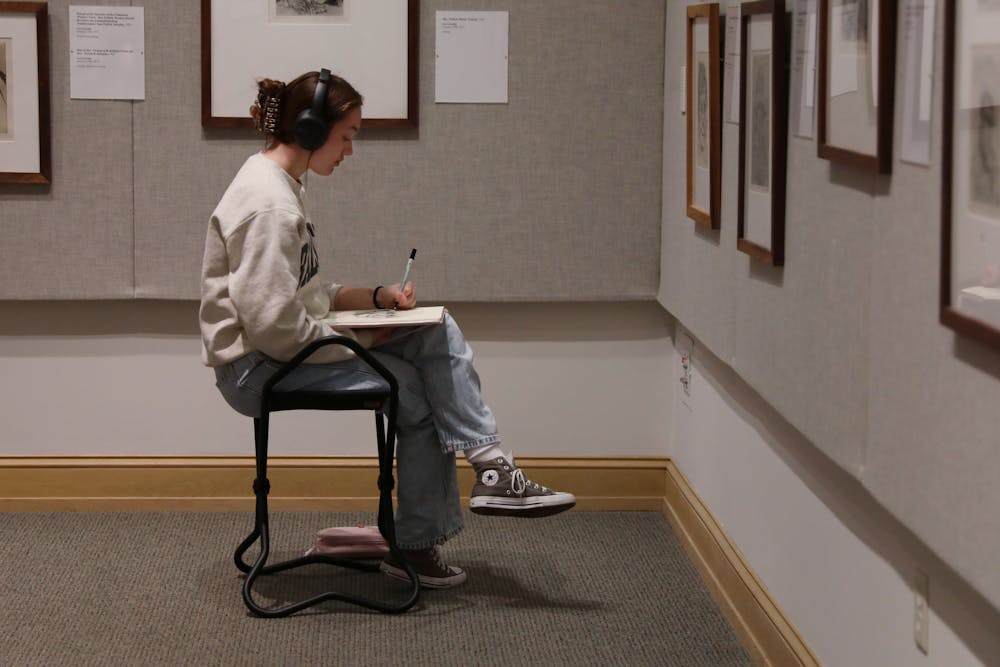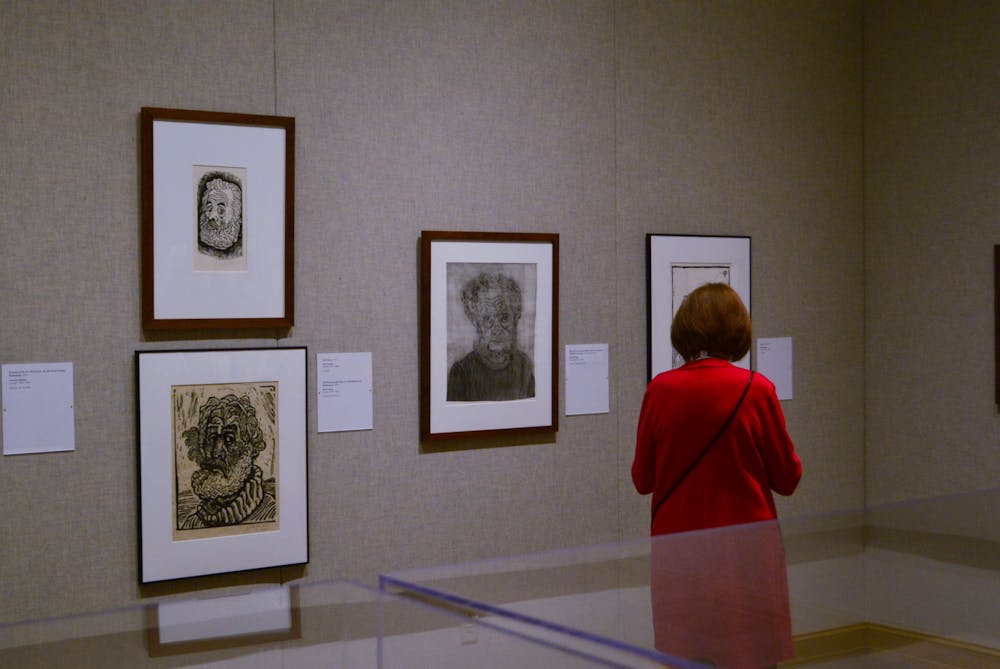Ninety-two prints and even more not yet on display. “A Wild Story: The David and Sarojini Johnson Print Collection” made its first public debut at the David Owsley Museum of Art (DOMA) in late February, but there is so much more than the art.
The Johnsons are both artists themselves, David a retired professor of 33 years, and Sarojini still teaching printmaking at Ball State University. This exhibition is not just random favorites, it is a collection of every era of printmaking.
“It shows a really personalized history of printmaking,” museum director Robert La France said. “The earliest one is from the fifteenth century, from the 1490s.”
The collection spans all the way through to modern printmaking, as the exhibit is housed in multiple separate rooms due to its size.
“There’s a huge variety of all very different styles, but it’s all very beautiful,” Misty Fox, drawing major and museum guard, said. “I was talking to some of my printmaking major friends who are also interns here, and both of them said that it’s one of the best print exhibits they’ve seen in a while.”
The collection has yet to be on display in this capacity to the general public, this being its first time in the light of a museum.
“It’s like a hidden gem, hidden treasure,” La France said. “We’re really grateful they’re showing this to us.”
The Johnsons bought one of the prints titled “The Young Couple” by Kathe Kollwitz right after getting married.
“When I got married, my grandmother gave us $400 for a washing machine, and there was this thing called the Chicago Print sale,” David said. “They would set up in a hotel, and they would invite dealers from all around the world, and we thought, ‘Oh, we can go to the laundromat.’”
They bought a print every year the sale continued, which was about 20 years. However, David’s collecting didn’t begin then.
“When I went to college the second time, I worked with a guy who had some [prints],” David said. “You don’t think about it being possible or accessible, but he had some [prints]. While I worked with him, he found some [prints] in a garage sale for $200.”

Not only did the couple collect, but they also advised at the DOMA, in a way. They formed a relationship with previous museum director Peter Blume, so he began to ask them for advice.
“One day, it was a Friday and 4 o’clock after my last class. He was at my office door, and he said, ‘They found an … etching. They thought it was lost in the bombing of [a] studio in Berlin, and it seems to be a rare proof before the steel facing. I think we should get it. If we get it, dealers will knock on our door!’” David said. “I said, ‘How much is it, Peter?’ and he said, ‘$16,000.’ I said, ‘Peter, I can’t even imagine spending $4,000 on a print.’”
After talking more with the director about various artists the museum should consider having in their collection, the director told David if he could find some of these prints, he would purchase them. And that’s exactly what they did.
While the Johnsons did aid the DOMA in gaining some prints, they also continued to build their personal collection, sometimes even coming in close contact with the artists they purchased from, such as Naoko Matsubara.
On a vacation to Toronto, the couple began looking in galleries for some of her work, knowing she was from the area. After visiting multiple galleries, the Johnsons were told Matsubara lived in Oakville and to call her.
After talking to her on the phone, Matsubara invited the Johnsons to her home, where they spent $300 on the artist's work.
Many pieces in the exhibit have stories like these. When talking about the collection, however, David doesn’t think about how much money they have spent acquiring it.
“The funny thing about the whole deal is that I think to a lot of people art is money, and that’s pretty disgusting,” David said. “[People think] it doesn’t represent a beautiful drawer. It doesn’t represent an idea. It doesn’t represent a symbol, a souvenir from some old woman’s life. [Instead], it’s this many dollars.”
The collection is now available to view for the members of the Ball State University community and the patrons of the DOMA.
“It was very nice to see artists who are professors here and just seeing what they’ve done and what they’ve collected over the years,” Fox said.
The exhibit began Feb. 23 and continues past the end of the academic year, closing May 21.
Contact Madelyn Bracken with comments via email @madelyn.bracken@bsu.edu.





